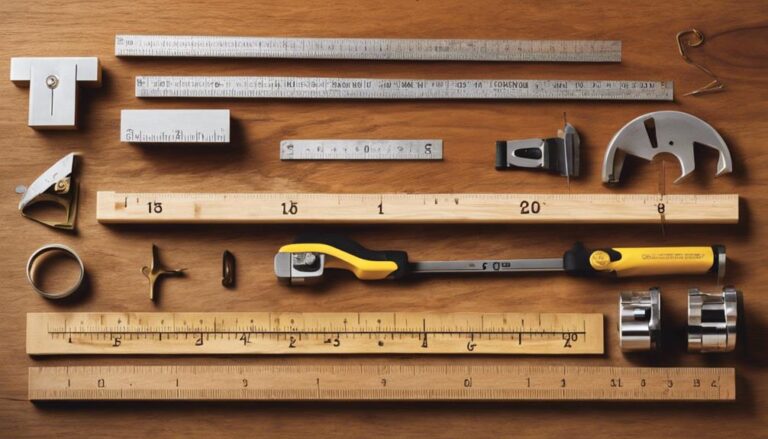Just as a master carpenter measures twice and cuts once, you too should approach your choice of wood with precision and care, especially when sustainability is at stake. You’re likely aware of the growing importance of using materials that not only stand the test of time but also protect our planet’s future.
Among the myriad options available, five stand out for their eco-friendly credentials and exceptional suitability for a range of carpentry projects. From the rapid renewability of bamboo to the unique story behind every piece of reclaimed wood, these options offer more than just a solid foundation for your work. They’re a step towards more responsible craftsmanship.
If you’re curious about how these materials can transform your next project and support the environment, let’s explore what makes them stand apart.
Contents
Bamboo: Eco-Friendly Alternative
Bamboo offers an eco-conscious alternative for your carpentry projects, growing rapidly and boasting a significantly lower carbon footprint than traditional woods.
As a rapidly renewable resource, it matures in a fraction of the time it takes for hardwood trees, making it a prime choice for sustainability-minded individuals. Its versatility allows for a wide range of uses, from flooring to furniture, all while maintaining strength and durability.
Embracing bamboo means supporting eco-friendly cultivation practices that are largely pesticide-free and more water-efficient than those used for conventional timber.
This not only benefits the environment by reducing harmful chemicals and conserving water but also ensures a healthier product for your home. Choosing bamboo for your next project contributes to a greener planet without compromising on quality or aesthetics.
Reclaimed Wood: Sustainable Choice
While bamboo offers a rapid-growth solution for sustainable building, reclaimed wood presents an equally eco-friendly alternative by breathing new life into previously utilized materials. Opting for reclaimed wood in your carpentry projects means:
- Reducing Demand – You’re decreasing the need for virgin timber, by salvaging wood from old structures, which conserves natural resources.
- Minimizing Waste – By repurposing what’s already available, you play a significant part in minimizing waste, making your projects more eco-friendly.
- Enhancing Aesthetics – Reclaimed wood adds unique charm and aesthetic appeal, ensuring your creations stand out.
Choosing reclaimed wood isn’t just about making a sustainable choice; it’s about embracing repurposing, conserving resources, and enhancing your projects with materials that tell a story.
Cork: Renewable Resource
Cork, harvested from the bark of cork oak trees, offers a renewable and eco-friendly choice for your carpentry endeavors. This harvesting process doesn’t harm the tree, enabling multiple harvests over its lifetime. Cork’s status as biodegradable and recyclable, coupled with its natural insulating properties, positions it as a top-tier sustainable material.
Its unique cellular structure not only makes it lightweight and resilient to moisture but also an exceptional sound insulator. Furthermore, cork’s durability, and resistance to fire, mold, and mildew enhance its value in construction projects. Opting for cork means you’re choosing a material that’s as kind to the environment as it’s beneficial for your project’s needs.
Rubberwood: Low-Impact Lumber
Moving from the renewable attributes of cork, let’s explore rubberwood, a low-impact lumber that champions sustainability in woodworking. Also known as parawood, it originates from the rubber tree, primarily known for latex production. Once these trees cease latex production, they find a second life in carpentry, embodying an eco-friendly lifecycle.
Rubberwood is celebrated for its:
- Sustainable Harvesting: It’s sourced from trees at the end of their latex-producing cycle, minimizing waste.
- Versatile Aesthetics: With its light color and smooth texture, it’s adaptable for various furniture and cabinetry projects.
- Dimensional Stability: Its resistance to warping enhances the longevity of your creations, from flooring to intricate carpentry pieces.
This eco-conscious choice marries functionality with sustainability, making rubberwood a preferred option for those aiming to reduce their environmental footprint.
Salvaged Hardwoods: Environmentally Responsible
In the realm of eco-friendly carpentry, salvaged hardwoods stand out by significantly reducing the need for new timber, highlighting a deep commitment to environmental stewardship.
By choosing reclaimed timber, you’re not just making a design statement; you’re actively conserving natural resources and minimizing waste.
Salvaged hardwoods, with their unique character and history, add an unmatched, authentic appeal to your carpentry creations.
Embracing these materials supports sustainable practices, extends the lifespan of precious wood, and diminishes the environmental impact associated with fresh logging.
Incorporating salvaged hardwoods into your projects is a testament to eco-friendly construction and responsible resource management, setting a standard for how we utilize materials without compromising the planet.
Conclusion
You’ve got a range of sustainable wood options for your next carpentry project that won’t just look great but will also tread lightly on our planet. From the rapidly renewable bamboo and cork to the reclaimed charm of old wood and the low-impact benefits of rubberwood, each choice supports a greener future.
Opting for salvaged hardwoods further underscores your commitment to environmental responsibility. By choosing these materials, you’re not just crafting with care; you’re building a legacy of sustainability.






